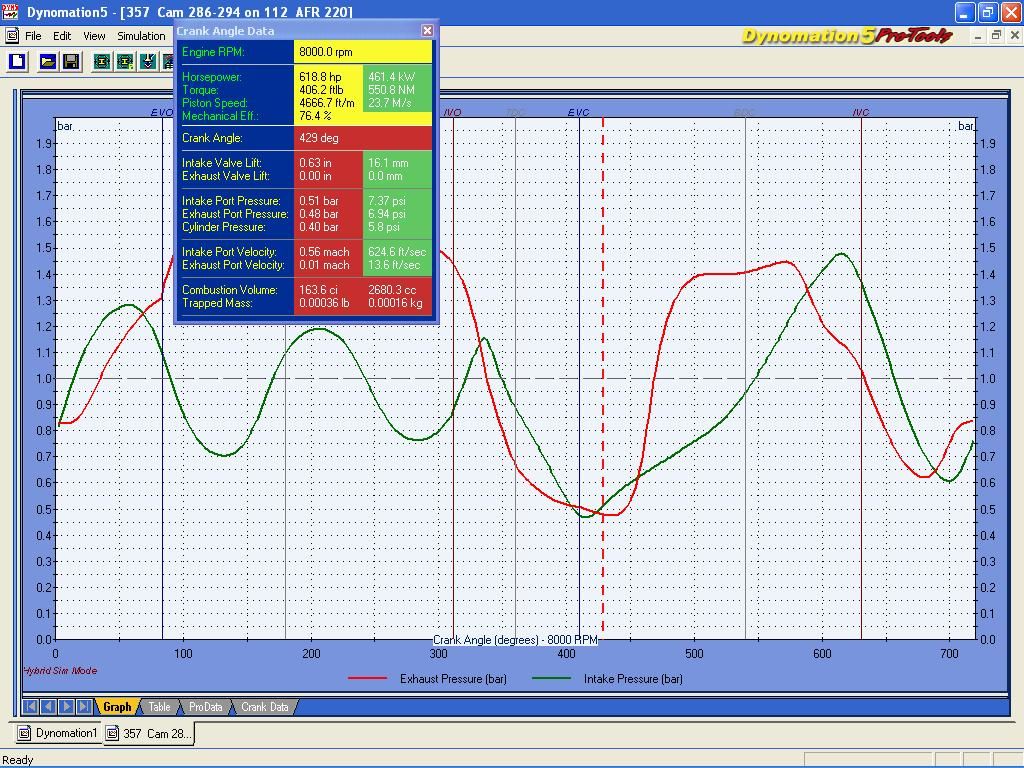twl wrote:What I keep noticing about these graphs is that the port velocity and seat velocity drop dramatically, after the big scavenge depression, and then go back up dramatically when the piston is descending.
This seems to imply that the effect from the scavenging depression is very short lived, and only effective in evacuation of the chamber because the valves aren't hardly even open yet. Of course it will have a big vacuum when its sucking on a closed chamber that can't let any air in.
As soon as the valve gets open to any significant level, the whole scavenging depression then falls right on its face, and doesn't pick back up until the piston draws it in.
As for the cylinder pressure, I don't doubt that an empty closed chamber will show a lot of depression when hooking a vacuum up to it, but when the valve opens and air starts coming in, then the cylinder pressure is starting to equalize with air filling into it, so of course it isn't going to show such a low depression during that time. Equalization is going on. As long as the draw from the piston stays ahead of the incoming mixture rush, we have what is needed. If the cylinder pressure stayed very low during that time, I don't think we'd like it very much because it would indicate that no air is getting in there.
This is what I'm seeing out of this.
You seem to be inferring that scavenge is over-rated or misconstrued. Consider:
o The seat velocity drops briefly both because the curtain area is increasing rapidly from zero on a percentage basis and because the delta produced between the port and the cylinder due to the piston accelerating down the bore is less than the previous scavenge delta. As the piston continues to accelerate, the increasing port area and resulting flow can't keep up, so the cylinder pressure slowly drops until ~ max piston speed (~440° on the graph) is reached.
o The port velocity does
not drop off at the end of the scavenge/overlap region, it just rises a little more slowly for ~ 30°.
o It's highly significant and important that intake port flow begins at ~ 45° BTDC* and reaches ~ 120 ft./sec by TDC. (It
is letting plenty of air in.) Visualize the lost 'area under the (port velocity) curve' that would result if intake flow didn't begin until TDC. There's no way that mass could be recouped later in the stroke absent the scavenging effect.
o It's flow that matters, not depression. Of course the scavenge pulse drops off; the exhaust valve is closed, but now piston motion takes over the job.
o If the graph was 'busied up' with intake and exhaust pressure traces, it would be clearer.
o * As an aside, note the significant reverse flow as IVC is approached...
Felix, qui potuit rerum cognscere causas.
Happy is he who can discover the cause of things.




